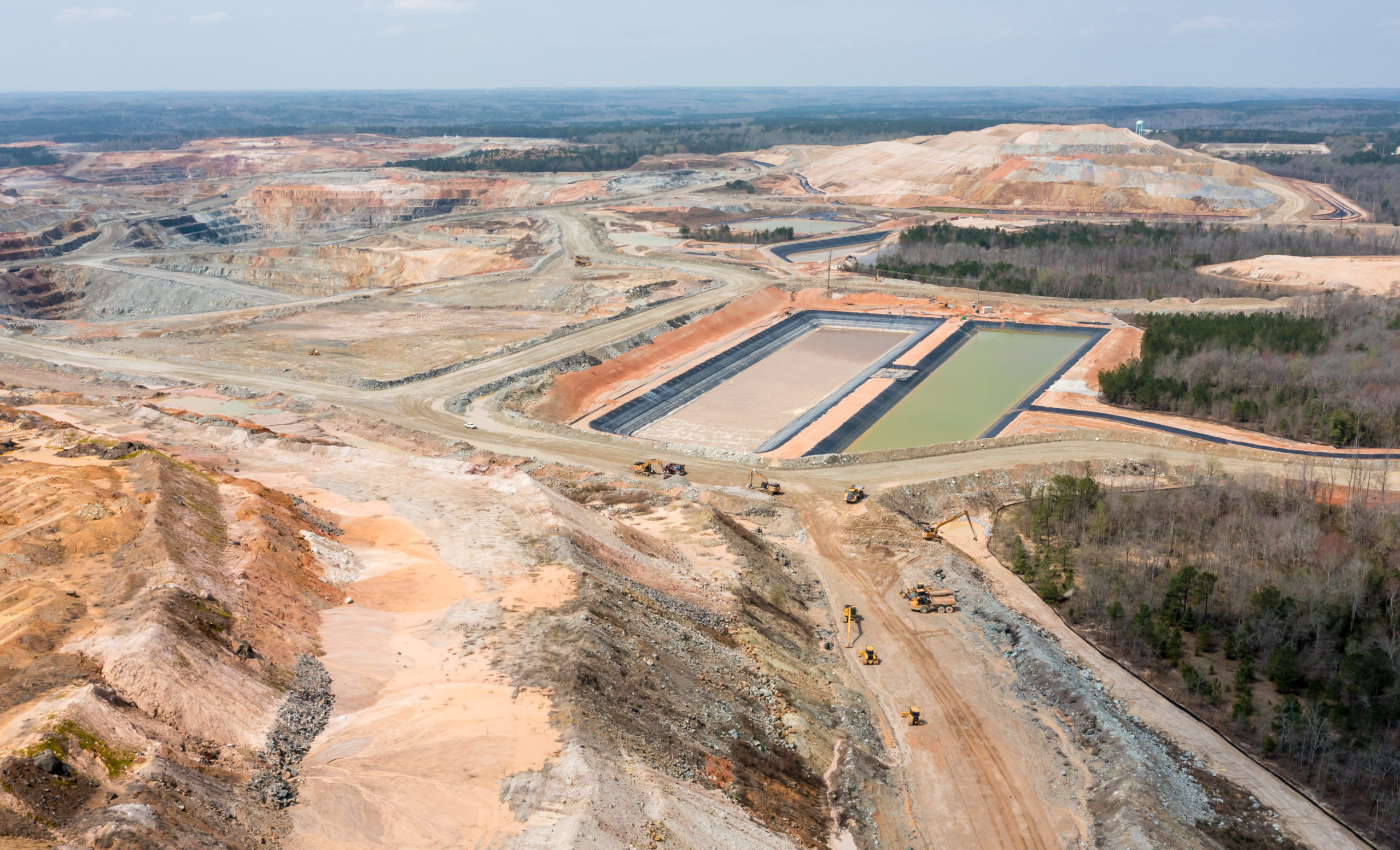
Historic gold mining has left a legacy of contamination
Gold mining occurred throughout Virginia in the gold-pyrite belt, including substantial operations across the PEC region in Orange, Culpeper and Fauquier counties. Based on our research, these sites remain largely unreclaimed, leaching toxins such as mercury, and are a continual source of acid mine drainage impacting local streams, rivers and groundwater. Now, half a century since metals were last mined commercially, the threat has resurfaced. Companies are currently exploring deposits for commercial metal mining here in Virginia. This is largely due to the price of gold and rising prices of other rare metals, some related to battery production.
A Canadian company has secured property in multiple Virginia localities, conducted exploratory drilling without counties’ knowledge, and touted the commonwealth as an easy target, owing to its lax regulations.
While some improvements in metal mining have been made since the last gold boom in Virginia, many of the issues related to contamination and offsite impacts remain. PEC is concerned about the negative impacts the metal mining industry would bring to Virginia’s communities and the current lack of substantive safety or environmental regulations.
We’re currently working with a coalition of organizations to pass comprehensive statewide legislation at the Virginia General Assembly to ensure the health, safety and welfare of our communities if this mining were to move forward.
What is metal mining?
Metal mining is the process of extracting industrial/base and precious metal ore from rock. These metals are used in everything from jewelry to electronics.
Definitions to know
- Ore: Metal-bearing rock.
- Waste rock: Rock which is blasted, mined and transported but does not contain metal.
- Industrial/base metal: metal which include copper, nickel, aluminum, lead, tin, iron, zinc. These metals are more common and less expensive than precious metal; they also more easily tarnish or corrode in the presence of air and moisture.
- Precious metal: metal which include silver, gold, platinum, palladium.
- Open-pit mining: Also known as open-cast or open-cut mining, open-put mining is a type of surface mining to reach metal deposits that are not very far underground. These mines are large pit with “benches” or steps of vertical layers along the walls. For reference, mountaintop removal is a type of surface mining that occurs on ridgelines. Quarries are also visually similar. Open-pit mining is considered a dangerous industrial sector due to drilling, blasting, loading, and hauling activities. It also generates large amounts of waste in the form or metal-bearing rock and waste rock, which contains leftover toxic chemicals from processing.
- Tailings: Ground up rock waste leftover from processing ore to remove metal. Tailings contain toxic chemicals from the extraction process, such as sulfide/cyanide compounds, and such, are stored in a tailings dam or settling pond as slurry to prevent environmental pollution.
The history of metal mining in Virginia: The gold-pyrite belt
Remembering our history lessons, the Virginia Company of London established Jamestown for the purpose of prospecting for gold in Virginia. While no gold was found back in 1607, Virginia does in fact have a geological area of valuable metal deposits, known as the gold-pyrite belt. The belt starts in Fairfax County and stretches southwest for 140 miles into central Virginia, ending in Appomattox County. It ranges from 9 to 16 miles across in width.
Gold mining in Virginia started around 1804, but gold and copper have not been commercially mined in Virginia since 1947 and zinc and lead not since 1981. It’s estimated that between 245 to 440 prospects and gold mines have occurred in total. One area in Virginia stands out as an epicenter: Spotsylvania, Culpeper, Greene near Wood Dr. and Orange near Wilderness.
The halt in metal mining operations can be attributed to impacts from the California Gold Rush and the war-time priorities of World War 2. Today, the legacy of those operations can still be felt—the newly proposed Wilderness Crossing development in northeastern Orange would occur over an area still severely polluted with mercury used in gold mining from before 1937.
Although there is currently no commercial base and precious metal minings in Virginia, there is mining for minerals like kyanite, common clay, sand, gravel, granite, limestone, feldspar, iron oxide pigments, lime, mica, montmorillonite and vermiculite.
What’s happening now?
In 2020, a Canadian Company called Aston Bay Holdings secured property in multiple Virginia localities (Buckingham, Campbell and Pittsylvania counties) and conducted exploratory drilling without counties’ knowledge. In Buckingham, the exploration sites were located on forestland within 3 miles of a majority-Black area (Union Hill near the James River), which was previously threatened by the Atlantic Coast Pipeline.
A canary in the “gold” mine, the proposal in Buckingham raised alarm in communities across Virginia.
PEC is particularly wary of the impact a return to metal mining operations could have on adjacent and downstream communities. Because metal deposits span the state, numerous watersheds would be affected, including the Chesapeake Bay. In our region, the eastern edges of Orange, Fauquier and Culpeper counties (located in the gold-pyrite belt) are most likely to be targeted for new proposals.
Why we’re concerned
Metal mining operations are subject to federal and state regulations. Unfortunately, Virginia’s current regulations fail to provide the necessary oversight for modern-day, large-scale metal mining operations.
Virginians will not be surprised that, like coal mining, metal mining poses a serious hazard to human and environmental health. The impacts of commercial mining for metals are well-documented, and include:
- Contamination of drinking water sources. This includes toxic and/or carcinogenic chemicals leaching into aquifers used for drinking water (since mining operations need to use groundwater sources), the overflowing of tailing dams into rivers and streams, sediment runoff (due to Virginia’s wet climate), and the deposition of particulate matter.
- Air pollution. The blasting and grinding of ore to extract metal causes pulverized rock to enter the air, which can pollute the air of nearby communities.
- Acid drainage. Metals like iron, copper, nickel, lead, cobalt, silver and zinc are extracted from sulfide ore, which becomes waste rock during the mining process. When these sulfur-bearing minerals enter streams, they react with surface water to create sulfuric acid. Fish, insects and other wildlife are unable to survive in the battery-acid-like pH levels.
- Visual disruption. Mining for just one ring worth of gold equates to about 10 dump drunks of waste rock being produced, and open-pit mining sites can span over a mile.
Read the Southern Environmental Law Center’s report “The Potential Environmental and Human Health Effects of Gold Mining in Virginia.”
Action items
As part of PEC’s efforts to protect clean water, we’re working with partners to bring legislation to the Virginia General Assembly to:
- Support initiatives that establish and fund impact studies of commercial metal mining.
- Support a moratorium on the issuance of metal mining permits until appropriate regulation is in place.
- Support communities, which are often low-income or those of color, facing this new and dangerous extractive threat.

